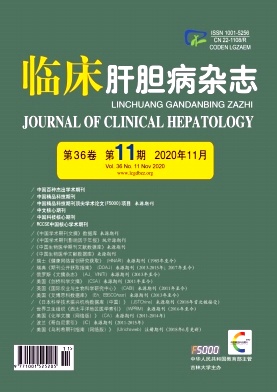|
[1] Pancreas Study Group,Chinese Society of Gastroenterology,Chinese Medical Association; Editorial Board of Chinese Journal of Pancreatology,Editorial Board of Chinese Journal of Digestion. Chinese guidelines for the management of acute pancreatitis(Shenyang,2019)[J]. J Clin Hepatol,2019,35(12):2706-2711.(in Chinese)中华医学会消化病学分会胰腺疾病学组,《中华胰腺病杂志》编委会,《中华消化杂志》编委会.中国急性胰腺炎诊治指南(2019年,沈阳)[J].临床肝胆病杂志,2019,35(12):2706-2711.
|
|
[2] FORSMARK CE,VEGE SS,WILCOX CM. Acute pancreatitis[J]. N Engl J Med,2016,375(20):1972-1981.
|
|
[3] GARG SK,SARVEPALLI S,CAMPBELL JP,et al. Incidence,admission rates,and predictors,and economic burden of adult emergency visits for acute pancreatitis:Data from the national emergency department sample,2006 to 2012[J]. J Clin Gastroenterol,2019,53(3):220-225.
|
|
[4] ZHOU MT,SHI KQ,TIAN X,et al. Clinical classification and treatment of hyperlipidemic acute pancreatitis[J]. J Hepatopancreatobiliary Surg,2019,31(1):19-20.(in Chinese)周蒙滔,施可庆,田新,等.高脂血症性急性胰腺炎的临床分型及救治方案[J].肝胆胰外科杂志,2019,31(1):19-20.
|
|
[5] SEPPANEN H,PUOLAKKAINEN P. Classification,severity assessment,and prevention of recurrences in acute pancreatitis[J]. Scand J Surg,2020,109(1):53-58.
|
|
[6] CHO JH,JEONG YH,KIM KH,et al. Risk factors of recurrent pancreatitis after first acute pancreatitis attack:A retrospective cohort study[J]. Scand J Gastroenterol,2020,55(1):90-94.
|
|
[7] MIKOLASEVIC I,MILIC S,ORLIC L,et al. Metabolic syndrome and acute pancreatitis[J]. Eur J Intern Med,2016,32:79-83.
|
|
[8] DOUBILET H,MULHOLLAND JH. Recurrent acute pancreatitis,observations on etiology and surgical treatment[J]. Ann Surg,1948,128(4):609-638.
|
|
[9] ZHANG FS,MA HY,ZOU DP. Analysis of clinical features and causes of acute recurrent pancreatitis[J]. Mod Med J China,2019,21(8):81-83.(in Chinese)张佛生,马海云,邹大朋.急性复发性胰腺炎的临床特点和病因分析[J].中国现代医药杂志,2019,21(8):81-83.
|
|
[10] AHMED ALI U,ISSA Y,HAGENAARS JC,et al. Risk of recurrent pancreatitis and progression to chronic pancreatitis after a first episode of acute pancreatitis[J]. Clin Gastroenterol Hepatol,2016,14(5):738-746.
|
|
[11] MAGNUSDOTTIR BA,BALDURSDOTTIR MB,KALAITZAKIS E,et al. Risk factors for chronic and recurrent pancreatitis after first attack of acute pancreatitis[J]. Scand J Gastroenterol,2019,54(1):87-94.
|
|
[12] XIANG JX,HU LS,LIU P,et al. Impact of cigarette smoking on recurrence of hyperlipidemic acute pancreatitis[J]. World J Gastroenterol,2017,23(47):8387-8394.
|
|
[13] PANG Y,KARTSONAKI C,TURNBULL I,et al. Metabolic and lifestyle risk factors for acute pancreatitis in Chinese adults:A prospective cohort study of 0. 5 million people[J]. PLo S Med,2018,15(8):e1002618.
|
|
[14] McCRACKEN E,MONAGHAN M,SREENIVASAN S. Pathophysiology of the metabolic syndrome[J]. Clin Dermatol,2018,36(1):14-20.
|
|
[15] LI X,GUO X,JI H,et al. Relationships between metabolic comorbidities and occurrence,severity,and outcomes in patients with acute pancreatitis:A narrative review[J]. Biomed Res Int,2019,2019:2645926.
|
|
[16] SZENTESI A,PARNICZKY A,VINCZEA,et al. Multiple hits in acute pancreatitis:Components of metabolic syndrome synergize each other’s deteriorating effects[J]. Front Physiol,2019,10:1202.
|
|
[17] HUANG Y,WANG Y. Clinical analysis of diabetes mel itus complicated with hyperlipidemic acute pancreatitis[J]. Chin J Gastroenterol,2018,23(7):423-425.(in Chinese)黄瑶,王营.糖尿病合并高脂血症性急性胰腺炎的临床分析[J].胃肠病学,2018,23(7):423-425.
|
|
[18] NIU L,GE LC. Acute recurrent pancreatitis and hyperlipidemia:Reciprocal causal relationship and clinical features[J]. World Chin J Dig,2016,24(30):4205-4210.(in Chinese)牛蕾,葛林春.急性复发性胰腺炎与高脂血症的互为因果关系及临床特点[J].世界华人消化杂志,2016,24(30):4205-4210.
|
|
[19] NIKNAM R,MORADI J,JAHANSHAHI KA,et al. Association between metabolic syndrome and its components with severity of acute pancreatitis[J]. Diabetes Metab Syndr Obes,2020,13:1289-1296.
|
|
[20] KISS L,FUR G,MATRAI P,et al. The effect of serum triglyceride concentration on the outcome of acute pancreatitis:systematic review and meta-analysis[J]. Sci Rep,2018,8(1):14096.
|
|
[21] MIKOA,FARKAS N,GARAMI A,et al. Preexisting diabetes elevates risk of local and systemic complications in acute pancreatitis:Systematic review and meta-analysis[J]. Pancreas,2018,47(8):917-923.
|
|
[22] CATANZARO R,CUFFARI B,ITALIA A,et al. Exploring the metabolic syndrome:Nonalcoholic fatty pancreas disease[J]. World J Gastroenterol,2016,22(34):7660-7675.
|
|
[23] ALEMPIJEVIC T,DRAGASEVIC S,ZEC S,et al. Non-alcoholic fatty pancreas disease[J]. Postgrad Med J,2017,93(1098):226-230.
|
|
[24] PATEL K,TRIVEDI RN,DURGAMPUDI C,et al. Lipolysis of visceral adipocyte triglyceride by pancreatic lipases converts mild acute pancreatitis to severe pancreatitis independent of necrosis and inflammation[J]. Am J Pathol,2015,185(3):808-819.
|
|
[25] JIANG XL,YANG F,WANG CH,et al. Correlation between serum level of cytokine and disease severity in HALP patients[J]. Med J West China,2017,29(4):489-493,498.(in Chinese)蒋晓岚,杨帆,王春晖,等.高脂血症性急性胰腺炎血清细胞因子水平与病情严重程度的相关性[J].西部医学,2017,29(4):489-493,498.
|
|
[26] BAIG S,SHABEER M,PARVARESH RIZI E,et al. Heredity of type 2 diabetes confers increased susceptibility to oxidative stress and inflammation[J]. BMJ Open Diabetes Res Care,2020,8(1):e000945.
|
|
[27] KEBKALO A,TKACHUK O,REYTI A. Features of the course of acute pancreatitis in patients with obesity[J]. Pol Przegl Chir,2019,91(6):28-34.
|
|
[28] SHARMA D,JAKKAMPUDI A,REDDY R,et al. Association of systemic inflammatory and anti-inflammatory responses with adverse outcomes in acute pancreatitis:Preliminary results of an ongoing study[J]. Dig Dis Sci,2017,62(12):3468-3478.
|
|
[29] RUIZ-REBOLLO ML,MUNOZ-MORENO MF,MAYOISCAR A,et al. Statin intake can decrease acute pancreatitis severit[J]. Pancreatology,2019,19(6):807-812.
|









 本站查看
本站查看




 DownLoad:
DownLoad: